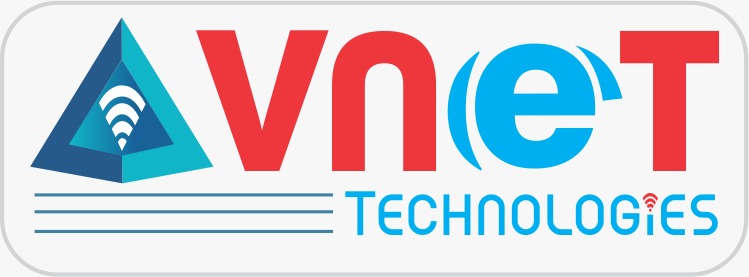
In today’s fast-paced digital world, effective cost management is crucial for businesses leveraging cloud computing platforms like Amazon Web Services (AWS). While AWS offers a robust set of tools and services for building and scaling applications, costs can quickly spiral out of control if not managed properly. Integrating AWS cost optimization strategies into your DevOps workflow can help you maintain budgetary control while maximizing the efficiency of your operations. In this blog, we’ll explore actionable strategies for optimizing AWS costs within your DevOps workflow.
Understand Your Cost Structure
Before diving into optimization strategies, it’s essential to understand how AWS pricing works. AWS charges are based on several factors, including:
Compute Resources: Charges for instances and other compute services.
Storage: Costs associated with data storage and retrieval.
Data Transfer: Expenses related to data transferred in and out of AWS services.
API Requests: Costs for using various AWS APIs.
Using the AWS Pricing Calculator and AWS Cost Explorer can help you visualize and forecast your expenses, laying the groundwork for effective AWS cost optimization.
Implement Cost-Aware DevOps Practices
- Leverage Spot and Savings Plans
Spot Instances: Utilize AWS Spot Instances to take advantage of unused EC2 capacity at a fraction of the cost. They’re ideal for flexible and stateless workloads.
Savings Plans: Commit to a consistent amount of usage for a 1- or 3-year term in exchange for lower rates compared to on-demand pricing.
- Automate Resource Scaling
Auto Scaling: Use AWS Auto Scaling to adjust the number of EC2 instances based on demand, ensuring you’re not paying for excess capacity.
Elastic Load Balancing: Combine with Auto Scaling to distribute traffic efficiently across your instances.
- Optimize Resource Allocation
Right-Sizing: Regularly analyze your instance types and sizes to ensure they match your workloads. Tools like AWS Compute Optimizer can help identify underutilized resources.
Reserved Instances: For predictable workloads, consider Reserved Instances to save up to 75% compared to on-demand pricing.
Implement Cost Controls and Monitoring
- Use AWS Budgets and Alerts
AWS Budgets: Set up AWS Budgets to monitor your spending and receive alerts when you approach or exceed your budget thresholds.
Cost Anomaly Detection: Leverage AWS Cost Anomaly Detection to identify unusual spending patterns and address them proactively.
- Regular Cost Audits
Cost Explorer Reports: Use AWS Cost Explorer to analyze your spending patterns and identify areas for optimization.
Third-Party Tools: Consider third-party cost management tools for additional insights and optimization recommendations.
Optimize Storage Costs
- Implement Lifecycle Policies
S3 Storage Classes: Utilize different Amazon S3 storage classes based on access frequency. For example, transition data to S3 Glacier for archival storage.
Automated Lifecycle Policies: Set up policies to automatically delete or transition older objects to more cost-effective storage classes.
- Data Compression and Deduplication
Compression: Compress data to reduce storage costs.
Deduplication: Eliminate duplicate data to lower storage requirements.
Network Cost Optimization
- Minimize Data Transfer Costs
Use Content Delivery Networks (CDNs): Deploy Amazon CloudFront to cache content closer to users, reducing data transfer costs from origin servers.
Optimize Data Transfer: Design applications to minimize cross-region data transfers and leverage AWS’s global infrastructure efficiently.
- Utilize VPC Peering
VPC Peering: When transferring data between VPCs, use VPC peering instead of traversing the public internet to reduce data transfer costs.
Implement Cost-Conscious CI/CD Pipelines
- Efficient CI/CD Resource Usage
Use Spot Instances for CI/CD: Employ Spot Instances or Reserved Instances for CI/CD builds to reduce costs.
Optimize Build Times: Streamline your build and deployment processes to minimize the time resources are utilized.
- Automated Clean-Up
Temporary Resources: Automate the deletion of temporary resources used during the CI/CD process to avoid unnecessary charges.
Conclusion
Optimizing AWS costs in your DevOps workflow requires a proactive and systematic approach. By understanding your cost structure, implementing cost-aware practices, and utilizing AWS tools for monitoring and control, you can significantly reduce expenses while maintaining a highly efficient and scalable infrastructure. Regular audits, thoughtful resource management, and leveraging cost-saving options like Spot Instances and Reserved Instances are key to achieving long-term AWS cloud cost optimization.
Incorporating these strategies into your DevOps practices ensures that your AWS spending is under control and enhances the overall efficiency of your cloud operations. For organizations in Coimbatore, specifically in Saravanampatti, VNet Technologies offers expertise in these areas, helping you to manage and optimize your AWS costs effectively. Start implementing these practices today and take charge of your AWS costs like a pro with the support of VNet Technologies!
